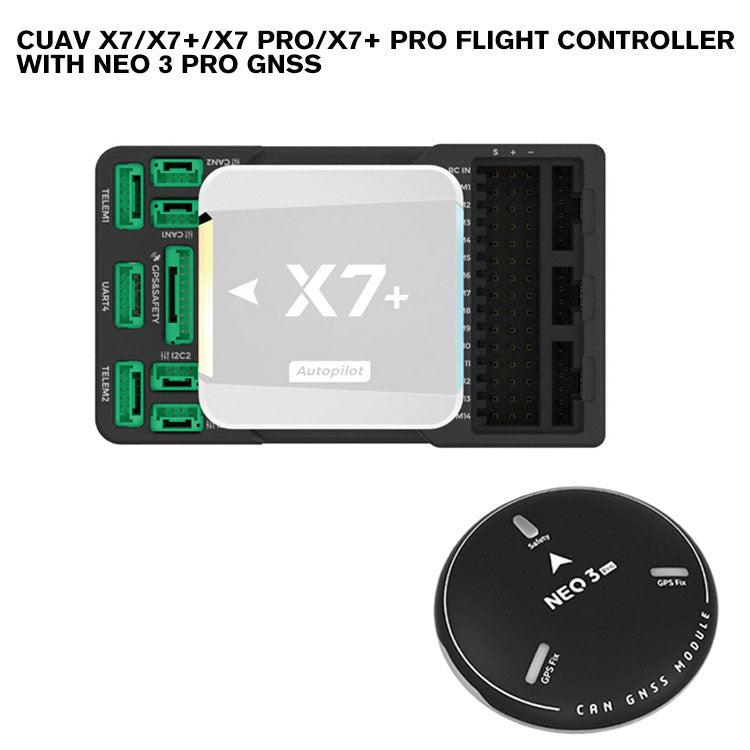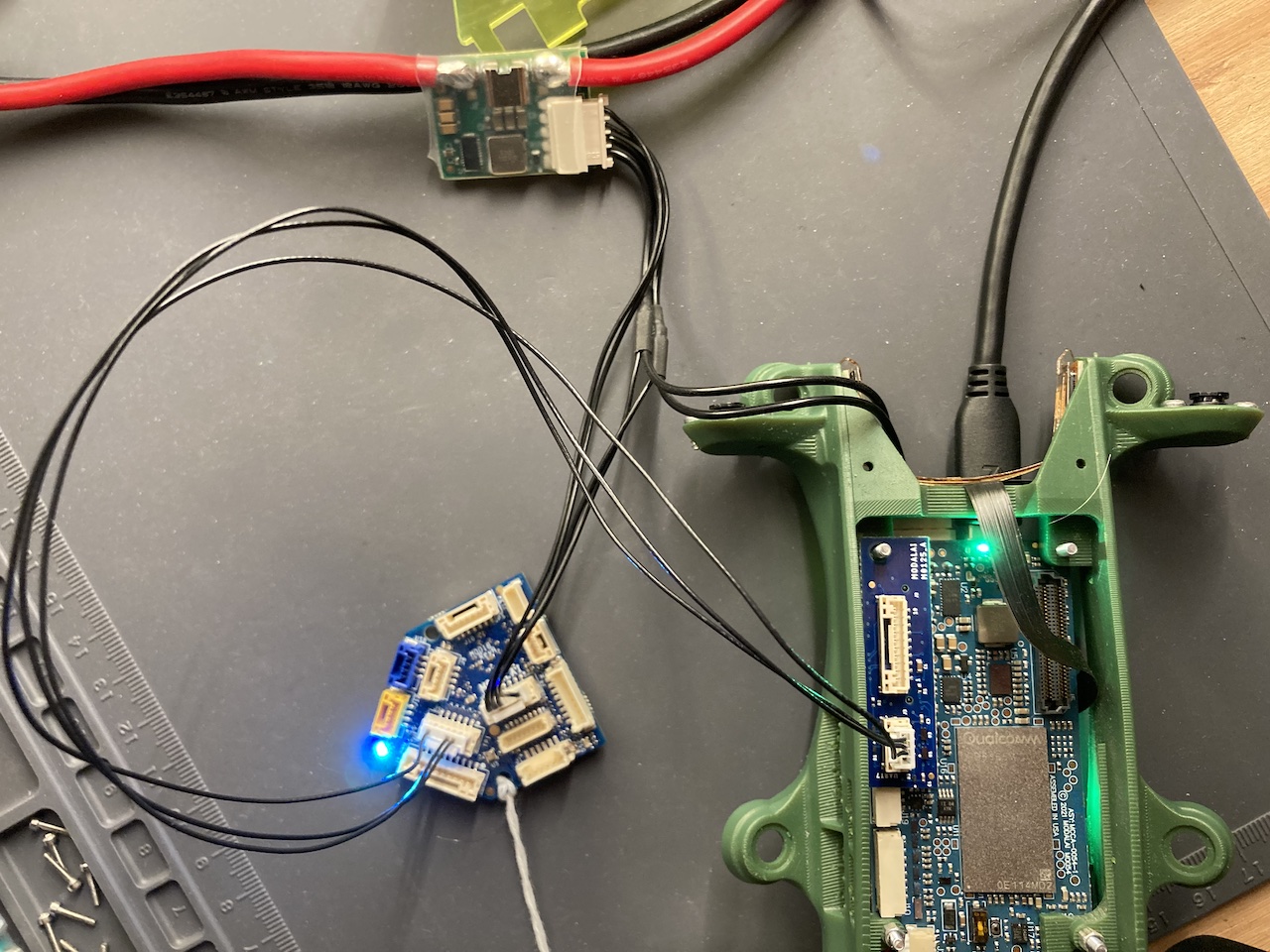Why Choose SparkNavi Drone Flight Controller and GNSS/INS Made in Taiwan for Advanced Navigation
Why Choose SparkNavi Drone Flight Controller and GNSS/INS Made in Taiwan for Advanced Navigation
Blog Article
The Relevance of Drone Flight Controllers in Modern Aerial Modern Technology: Trick Components and Their Impact
In the world of contemporary aerial modern technology, drone trip controllers offer as the critical systems that orchestrate a drone's performance and abilities. These innovative devices integrate crucial elements such as microcontrollers and GPS components, assisting in stability and accuracy in flight operations. Their role is especially pronounced in independent features, where innovative formulas boost navigation and challenge evasion. As sectors increasingly rely upon drones for applications varying from farming to surveillance, the progressing modern technology within flight controllers increases important concerns concerning their future influence and possible developments. What developments exist ahead that could redefine our understanding of drone capabilities?

Summary of Drone Trip Controllers
In the realm of airborne innovation, drone trip controllers act as the crucial mind of unmanned aerial lorries (UAVs), making it possible for specific maneuverability and stability throughout trip. These advanced systems incorporate sensor data, refining formulas, and control inputs, permitting drones to implement complex trip patterns with precision.
Drone flight controllers use different sensing units, such as gyroscopes, accelerometers, and GPS components, to analyze the UAV's alignment and position in real-time. This details is vital for preserving equilibrium and making certain risk-free operation in diverse environmental problems. The controllers process this information to make instant adjustments to the drone's motors, enabling smooth shifts and responsive handling.
Furthermore, trip controllers are furnished with sophisticated software program that supports functions such as waypoint navigating, obstacle avoidance, and autonomous flight capabilities. This software program is crucial for both leisure and business applications, where integrity and precision are extremely important. As drone technology remains to advancement, the development of flight controllers will play a crucial role in enhancing UAV adaptability, functionality, and safety and security, eventually increasing their applications across various markets.
Trick Parts Explained
Comprehending the essential components of drone flight controllers is vital for comprehending just how these systems operate successfully. At the heart of a trip controller is the microcontroller, which acts as the brain, refining data from numerous sensing units and carrying out commands. Vital sensing units include gyroscopes and accelerometers, which gauge the drone's positioning and activity, offering essential comments for stabilization.
Another secret part is the barometer, which gauges elevation by gauging atmospheric pressure, while general practitioner components offer positional information, making it possible for autonomous navigating - SparkNavi drone flight controller and GNSS/INS made in taiwan. The flight controller additionally interfaces with Digital Rate Controllers (ESCs), which manage the rate of the drone's motors based upon the controller's commands
Communication components, such as radio receivers, facilitate push-button control input, enabling operators to send commands in real-time. Furthermore, some flight controllers integrate software application that can manage complicated algorithms for waypoint navigating, flight planning, and telemetry information analysis.
Duty in Trip Security
Central to maintaining flight stability, drone flight controllers use advanced formulas to refine sensing unit information and make real-time modifications. These controllers are geared up with an array of sensing units, consisting of measures, gyroscopes, and accelerometers, which continuously monitor the drone's alignment, altitude, and speed. By interpreting this data, the flight controller can recognize variances from the desired trip course and react without delay to keep security.
For instance, if a drone experiences an unforeseen gust of wind, the trip controller can promptly adjust the electric motor speeds to neutralize the disturbance, making sure a constant flight trajectory. This capability is crucial not just for hand-operated flight operations however additionally for performing intricate maneuvers and preserving smooth trip in various environmental conditions.
.jpg)
Furthermore, the sophisticated algorithms used in flight controllers, such as PID (Proportional-Integral-Derivative) control, permit fine-tuning of the drone's reaction to adjustments in flight problems. By maximizing these control criteria, trip controllers can enhance stability, improve responsiveness, and reduce pilot work. Inevitably, the role of flight controllers in making certain flight stability is essential for the effective and secure procedure of modern-day drones across diverse applications.
Impact on Autonomous Operations

Self-governing operations are especially crucial in varied applications such as security, farming, and distribution services. With enhanced flight controllers, drones can autonomously browse fixed paths, effectively gather data, and adapt to dynamic environments. This capability minimizes the need for constant human oversight, consequently boosting functional performance and security.
Moreover, the execution of artificial intelligence techniques within trip controllers allows drones to boost their efficiency with time by gaining from previous missions. This flexibility leads the way for more innovative autonomous applications, such as flock technology, where numerous drones collaborate their activities to attain a typical goal.
Future Trends in Flight Controllers
Developments in flight controller technology are positioned to change drone capacities in the coming years. One considerable trend is the integration of synthetic knowledge (AI) and artificial intelligence formulas, allowing drones to find out from their environments and make real-time choices. This advancement will enhance self-governing navigating, challenge avoidance, and objective preparation, considerably improving functional efficiency and safety and security.
Moreover, the growth of sophisticated sensing unit modern technologies, such as LiDAR and multispectral imaging, will offer trip controllers with richer data inputs. This will promote much more sophisticated analytical capabilities, enabling drones to conduct complex tasks, such as accuracy search, rescue and agriculture, and framework inspections with unmatched accuracy.
One more arising trend is the miniaturization of trip controller components, which will certainly lead to lighter and more compact drones. This evolution will certainly extend flight durations and payload abilities, making drones a lot more flexible for various applications.
Final Thought
In conclusion, drone trip controllers function as crucial components in modern aerial innovation, making sure security and accuracy in ability to move through the assimilation of microcontrollers, accelerometers, and GPS components. SparkNavi drone flight controller and GNSS/INS made in taiwan. Their capacity to enable self-governing procedures and adjust to various applications emphasizes their importance across numerous markets. As advancements in man-made intelligence and sensor innovation proceed to arise, the possibility for improved capabilities and boosted functional effectiveness in pop over to this site drone systems will likely reshape the future of airborne applications
Central to maintaining flight security, drone trip controllers use innovative formulas to process sensor information and make real-time adjustments. By analyzing this information, the trip controller can identify inconsistencies from the desired flight path and respond without delay to preserve security.
Additionally, the innovative formulas used in trip controllers, such as PID (Proportional-Integral-Derivative) control, enable for fine-tuning of the original source the drone's response to changes in trip conditions. Eventually, the duty of trip controllers in guaranteeing trip stability is important for the efficient and safe operation of modern drones across diverse applications.
The advancements in drone trip controllers not only enhance trip stability however additionally considerably affect independent procedures. SparkNavi drone flight controller and GNSS/INS made in taiwan.
Report this page